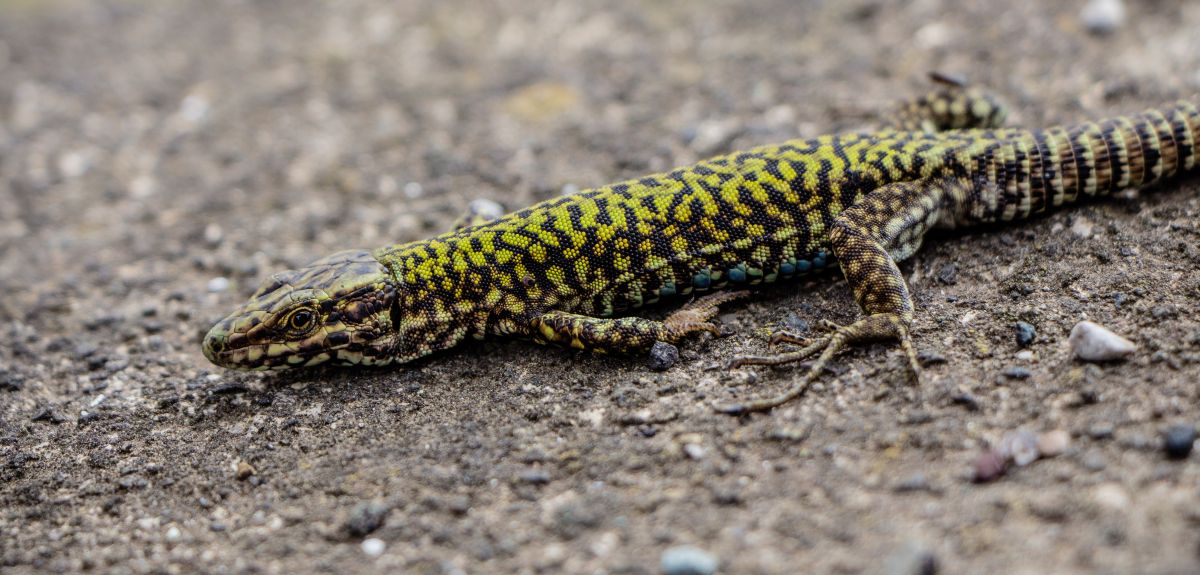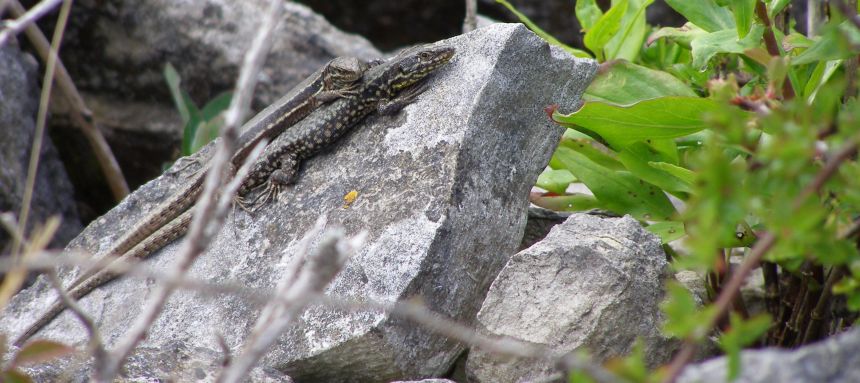
Image courtesy of Geoffrey While
Lizards quickly adapt to chilly English climate
Lizards originally from balmy southern Europe have adapted to the colder English climate within a few decades, a study from Oxford University has found.
The study, published in the Proceedings of the Royal Society of London B, found that wall lizards (Podarcis muralis) in England had eggs that developed faster, compared to the same species in France and Italy.
As reported on BBC online, this adaptation to a cooler climate is likely to have helped this new species to gain a foothold in England.
I caught up with Dr Tobias Uller at the Department of Zoology and asked him about his work.
OxSciBlog: What was new about your study?
Tobias Uller: We show that adaptation to a cooler climate can happen very quickly, over just a few decades.
By combining our measurements of soil temperature variation, computational modelling, and carefully controlled lab experiments, we show that there is natural selection for a shorter incubation period in wall lizard eggs in England. This selection is caused by the colder temperature of the soil in which the lizards lay their eggs.
Wall lizards have adapted to this selection pressure by laying eggs which are further along in their embryonic development.
We also found that once laid, the eggs develop much faster.
The net effect is that wall lizard eggs in the UK hatch quicker than they would when they were first introduced into England some decades ago.
 Wall lizards
Wall lizardsImage courtesy of Geoffrey While
OSB: How common are wall lizards in the UK?
TU: There are about 30 populations of these lizards in the UK. They turn up as far north at the Gower Peninsula (in Wales), and current populations were introduced to this country less than 100 years back.
Some of these populations were deliberately introduced. (This practice is now illegal).
But these lizards are also quite commonly kept as pets, so some populations have been established by ‘escapees’, from animals brought in as pets.
Our research was based on populations in Dorset and the Isle of Wight. These were separate introductions. So the fact that the pattern of changes is the same in both populations gave us more confidence that this is no coincidence.
OSB: What did you do with the female lizards that you collected from these areas?
TU: We kept and raised animals collected from different areas in the same laboratory conditions.
This is important, because if females in Italy and in England lay their eggs at different stages in embryonic development, this may be because of the different temperatures they are exposed to in the wild. By keeping animals from different geographic locations under the same conditions, we can say that any differences that we find are due to genetic differences between the population, rather than differences in the environmental conditions they are exposed to.
Under these controlled conditions, we checked what embryonic stage the eggs were at when they were laid.
We then incubated the eggs laid by different populations at many different temperatures, to see how long they took to hatch.
We used this data to generate developmental rates for different populations, and we could then compare the developmental rate for 'native' (from Italy and France) and 'introduced' (from England) populations.
OSB: What did you find?
TU: There are two different ways that lizards in England could adapt to colder soil temperatures in their nests.
Lizards can 'bask', i.e., they can maintain a higher body temperature than their surroundings. So female lizards can lay their eggs later, when the embryos are more advanced. This reduces the overall time the eggs have to spend in the cold soil.
The other strategy is for embryos to increase the rate of development, which also reduces the time the eggs spend in the cold soil.
We found that the lizards in England have evolved by making use of both these strategies.
The net result is that wall lizard eggs in England hatch about two weeks earlier now than they would have done when the species was first introduced.
OSB: Do these results have implications for climate change?
TU: We show that the adaptation to changes in temperature can be very rapid, a matter of decades.
Evolutionary biologists increasingly expect to see more examples of this kind of rapid adaptation to a changing climate.
 Making sense of sex: why genes recombine
Making sense of sex: why genes recombine 8 things about Oxford’s driverless tech
8 things about Oxford’s driverless tech A song of fire and ice in the ocean
A song of fire and ice in the ocean Bubble research rises to the top
Bubble research rises to the top Seashells and sediment: measuring oxygen
Seashells and sediment: measuring oxygen